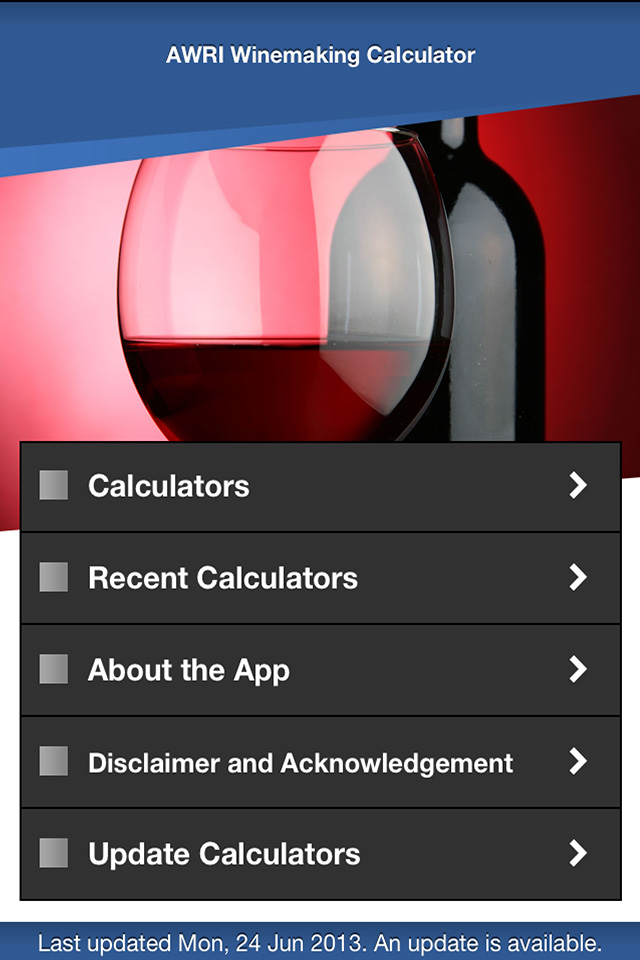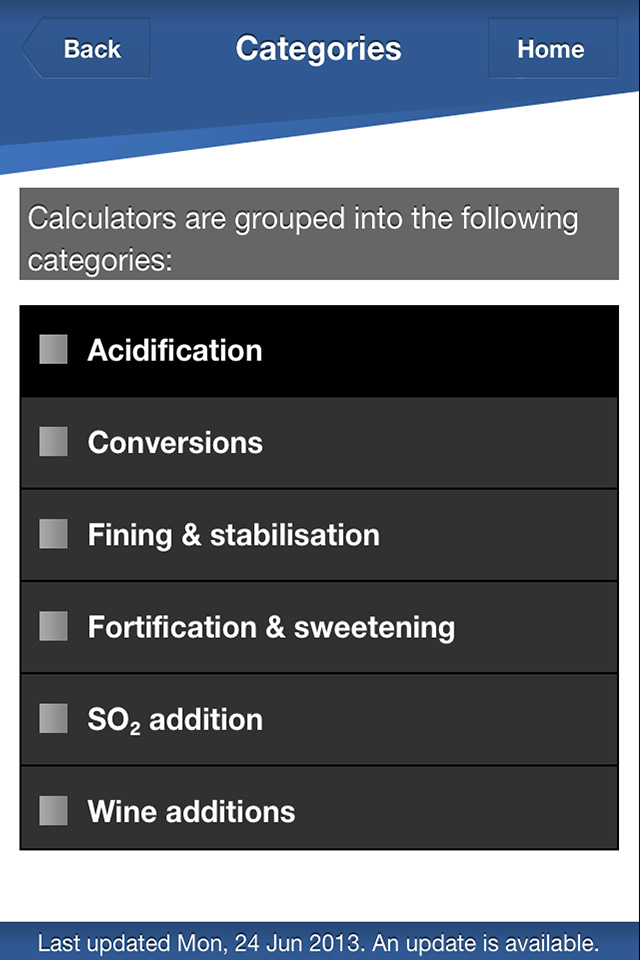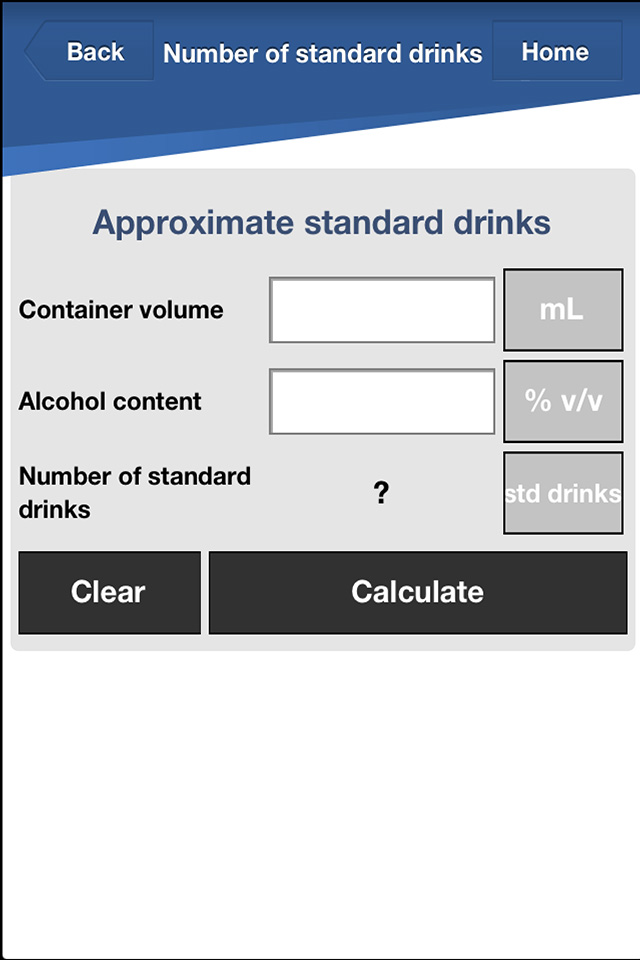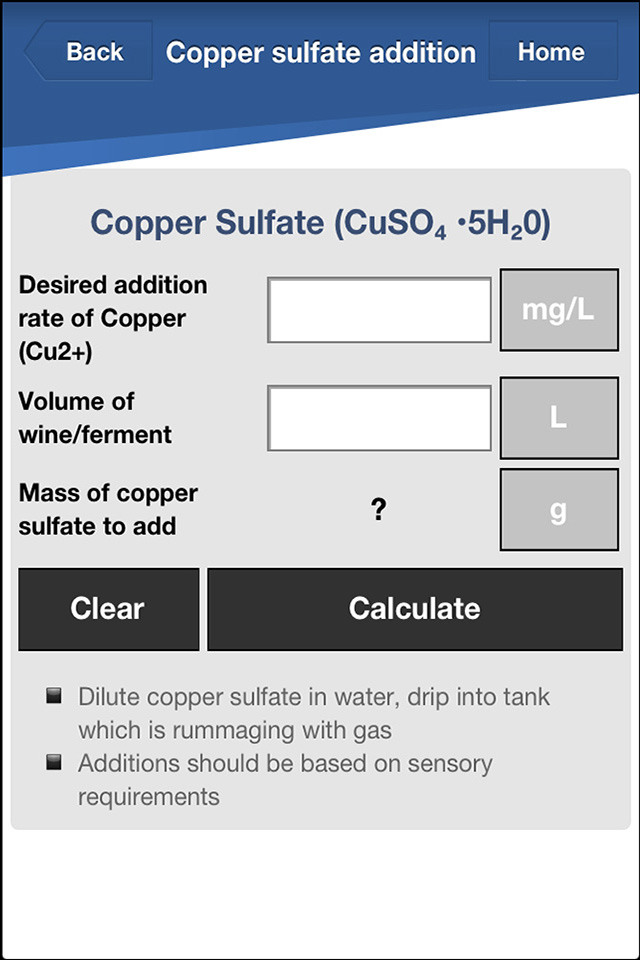Great response received for the 15th Australian Wine Industry Technical Conference
Sample the science at WineTech 2013 – the Australian Wine Industry Trade Exhibition
WineHealth 2013 to be held this month
Environmental services in focus as CO2 hits an all time high
Climate projections focuses producers on 2030 and beyond
Attend a live seminar from your desk
AWRI Scientist finalist in 2013 SA Science Excellence Awards
Recent literature
Great response received for the 15th Australian Wine Industry Technical Conference
The 15th AWITC is now less than two weeks away, and it’s great to see the registrations coming in every day. Held every three years, it is the Australian wine industry’s most important event in supporting the sustainability of the Australian wine industry. This, and WineTech – the Australian Wine Industry Trade Exhibition, will be held in Sydney this year from 14-17 July (workshops running 13-18 July). The sessions, workshops, posters and trade exhibition are specifically tailored to the requirements of Australian wine and grape professionals. Don’t miss it.
AWITC by the numbers:
- 10 formal sessions over four days
- 2 ‘Fresh Research’ sessions
- 51 speakers, including 15 international speakers
- 44 workshops, including 25 with tastings
- 160 posters
- 2900 m2 of exhibition space (many exhibitors launching new products/services)
- Student forum: In the wine light
- 10 km Sydney fun run
- 6 Pop up bars
- NSW Regional wine tasting
- Conference dinner at Doltone House Darling Island Wharf
If you want to register for the conference, or for a workshop, or for the trade exhibition, or for all of it – read on. If you want to know about joining the AWITC team in the Sydney 10 km fun run or learn about the Pop up Bars or attend the conference dinner – read on. See you in Sydney!
Register for the Conference
Click here to register for the 15AWITC. Click here to download the program. Click here to download the workshop program (note that workshops W15, W25, W28, W33, W34 are sold out).
If you can’t attend the conference, you can still attend as a visitor for WineTech – the Australian Wine Industry Trade Exhibition
- WineTech aims to provide valuable business tools: through access to new suppliers, innovative solutions and, above all, new ideas for grapegrowing and winemaking operations.
- WineTech provides wine industry professionals with the opportunity to network face-to-face, and keep abreast of the latest products and services available for the production of wine.
- This year’s event will see the launch of exciting new products for just about every aspect of grapegrowing and winemaking.
Click here to register as a visitor only for WineTech – the Australian Wine Industry Trade Exhibition. Note that conference delegates do not need to register separately to attend the trade exhibition.
In the wine light
As part of the conference program, the In the wine light student forum will be held 5:30-7:00 pm, Monday, 15 July in the Bayside Terrace, Level 2, Sydney Convention and Exhibition Centre. Drinks and nibbles will be provided. All delegates are welcome to attend.
Conference dinner
- This prestigious event will be held on Tuesday 16 July 2013 at multi-award-winning Doltone House, Darling Island Wharf. The evening will begin with a short Harbour cruise from the Conference venue. Further details are available here.
- Tickets are AUD$170 (inc GST). If you would like to attend, send an email or order dinner tickets via the online registration page.
Pop-up Wine Bars
Pop-up wine bars will be at the Conference with each one offering delegates the opportunity to sample wines from around the country. Locations and any variations to times will be broadcast on Twitter (follow the posts on #15AWITC or follow us on @The_AWITC) and details available from staff at the AWITC registration desk.
The pop up bars will run for 45 mins (or until stocks run out) and are scheduled as follows:
- Riesling: Monday 15 July during lunch break 12.30 – 1.30 pm
- Chardonnay: Tuesday 16 July during lunch break 12.35 – 2:00 pm
- Pinot Noir: Tuesday 16 July during exhibition/poster viewing afternoon 3.30 – 6:00 pm
- Shiraz: Tuesday 16 July during exhibition/poster viewing afternoon 3.30 – 6:00 pm
- Cabernet: Tuesday 16 July during exhibition/poster viewing afternoon 3.30 – 6:00 pm
- Alternative varieties: Wednesday 17 July during lunch break 12.50 – 2:00 pm
Alumni breakfast
The University of Adelaide is organising an alumni breakfast. This will be held 7:00 am, Monday, 15 July at the Novotel Darling Harbour. For more information and to register go to: http://www.alumni.adelaide.edu.au/winesyd
Team AWITC: Sydney Harbour 10 km fun run – starts and finishes at The Rocks, Sydney
Feeling fit? A 10 km public fun run is being held on Sunday 14 July. The run starts and finishes in The Rocks and follows a course that gives participants great views of the harbour and city. And yes, the course is flat! More info is available here. Once you have completed the personal details on the registration form, you will be asked if you would like to join the 15th AWITC team.
The organiser’s website is a little confusing. Here is what you do to join your colleagues in the 15AWITC team:
- Go to https://eventdesq.imgstg.com/index.cfm?fuseaction=RegisterAdd1&EventDesqID=1676&OrgID=9837 to register
- Fill out the Entry Type page, click ‘next’ down the bottom of the page. This should take you to the Personal Data page. If it doesn’t, click the green ‘click here to register’ button and try again.
- Fill out the Personal Data page. The last box on this page says ‘Teams’. Ignore this and click ‘next’ at the bottom of the page.
- Fill out the Entry Form page. Half way down this page is a box that says ‘Australian Wine Industry’. Click the ‘yes’ box. The box below says the Australian University Championships. Click the ‘no’ box. Click ‘next’ at the bottom of the page.
- Fill out the Merchandise page. Click ‘save’.
- Check your details on the Register page. Click ‘submit now and pay online’.
- Fill out the Payment Information page. Click ‘next’ at the bottom of the page.
- All done – hopefully!
Keep up to date on Twitter.
Sample the science at WineTech 2013 – the Australian Wine Industry Trade Exhibition
The AWRI will have a stand at WineTech 2013 (14-17 July 2013, Sydney Convention and Exhibition Centre) and is a great opportunity for industry members to gain a deeper insight into how the AWRI delivers value to grape and wine producers. Meet up with researchers, try out new technologies and discover the analytical, information and education services the AWRI has to offer. Fill out a feedback survey for a chance to win an iPad! The AWRI is located at Stand # 2236. Note: AWITC delegates do not need to register separately to visit the exhibition. If you can’t attend the AWITC, you can still visit the exhibition, free of charge, by registering here to save time, or register on the day you visit.
WineHealth 2013 to be held this month
The international WineHealth 2013 conference will be held following the 15th Australian Wine Industry Technical Conference (18-20 July at the Sydney Convention Centre). New research on the relationship between the consumption of wine and health is accelerating from around the world. WineHealth 2013 in Sydney builds on the success of the 6th International WineHealth Conference held in Friuli, Italy in 2010, and brings together scientific experts from across the globe. Experts will present their latest research findings across a variety of disciplines. Read more for more information or to register.
Speakers work in a variety of disciplines including:
Cardiovascular health
Pharmacology
Ageing
Cognitive function
Nutrition and lifestyle
Psychology
This conference presents the most objective picture of what is known about wine and its relationship to health. Sociological outcomes of the use and abuse of wine, and hence public health priorities will also be presented.
Click here to access the list of speakers and here for the program.
For further information, contact Creina Stockley, The Australian Wine Research Institute by email or telephone +61 (0) 8 8313 6600. Or visit the website for more information.
Environmental services in focus as CO2 hits an all time high
TIn May 2013, the Mauna Loa Observatory in Hawaii announced for the first time in human history that atmospheric carbon dioxide (CO2) had passed 400 parts per million. Closer to home in Tasmania, latest CO2 readings are fast approaching a similar high. If these trends continue, climate variation might have serious business impact. The AWRI Commercial Services team has significant expertise in developing and executing environmental strategies for the industry.
It’s timely to consider how to manage a variable climate and whether key brands have clear and prominent environmental credentials. Unlike many consultants working in this field, the AWRI team has an excellent knowledge of commercial winemaking built on a foundation of process engineering experience. Services provided include useful environmental accounting and formulation of strategies to improve environmental performance.
For further information contact Karl Forsyth by email or telephone 0409 098 092.
Climate projections focuses producers on 2030 and beyond
The AWRI and Wine Victoria were proud to host the ‘Vintage 2030 and beyond – producing quality wines in warmer times’ Symposium on Wednesday, 19 June 2013 in Melbourne (at the Elisabeth Murdoch Lecture Theatre at The University of Melbourne). This symposium brought together Australia’s best presenters and latest thinking on climate projections for key wine producing regions across Australia, and looked at novel ways the wine industry is adapting to these challenges. Copies of the presentations that have been made publicly available for download are available from the AWRI website.
Presenters included Professor Will Steffen (ANU/Climate Commission), Dr Penny Whetton (CSIRO), Dr Peter Hayman (SARDI), Dr Victor Sadras (SARDI), Robert Paul (Vintager Winemaking Services), Dr Michael McCarthy (SARDI), Andrew Weeks (CCW – absent on day – presentation delivered by Dr Mark Krstic), Dr Paul Petrie (TWE), Roland Wahlquist (Brown Brothers), Darren Rathbone (Rathbone Wine Group), George Mihaly (Paradigm Hill) and Dr Richard Smart (Smart Viticulture).
The day was attended by approximately 90 people, mostly from the Victorian wine sector.
Attend a live seminar from your desk
The AWRI webinar series for 2013 is now underway! Don’t miss this year’s series of live and interactive webinars presented by the AWRI researchers and industry guests. Webinars will cover a diverse range of topics across viticulture, winemaking, climate and consumer insights. They provide an excellent opportunity to hear up-to-date research results and to ask the presenter questions.
Each webinar consists of a presentation followed by a Q&A session and is held on a Tuesday at 11:30 am Australian Central Time (Adelaide, GMT+9:30). The webinar program is free to attend, but registration is required. To register or to find out more details on the full webinar program, visit the website.
Upcoming events
23 July 2013
Optimising your laboratory for the best results Webinar
Eric Wilkes (The AWRI)
For more information and to register click here.
30 July 2013
Strategies for reducing alcohol levels in wine Webinar
Cristian Varela (The AWRI)
For more information and to register click here.
6 August 2013
The latest on CMCs
Eric Wilkes (The AWRI)
For more information and to register click here.
20 August 2013
Till death do us part: Cell death in the grape berry as a quality measure Webinar
Steve Tyerman (The University of Adelaide)
For more information and to register click here.
27 August 2013
Climate influence and trends for the wine industry Webinar
Darren Ray (Bureau of Meteorology)
For more information and to register click here.
AWRI Scientist finalist in 2013 SA Science Excellence Awards
The AWRI Research Scientist, Dimitra Capone, has just been named as a finalist in the 2013 SA Science Excellence Awards sponsored by The Department of Further Education, Employment, Science and Technology (DFEEST). Dimi has been recognised within the Early Career category in the field of Life and Environmental Sciences. These awards recognise and reward outstanding scientific endeavour, including its application in industry. Dimi’s nomination recognises her research efforts in two areas of flavour chemistry:
- identifying the origin of the minty/eucalypt character in red wine; and
- understanding the formation of a tropical/citrus flavour compound in white wine.
Both of these projects have given producers greater opportunities to have control over the final aroma profile of their wines. Winners of the SA Science Excellence Awards will be announced in August.
Recent literature
John Fornachon Memorial Library at the AWRI delivers journal articles and loans books to Australian grapegrowers and winemakers. Books can be searched and requested via the Library catalogue – or you can email the Library with your request. A list of recent AWRI publications follows.
- To order AWRI staff publications and articles from Technical Review please contact the Library.
- Articles and books on specific topics can be searched for and ordered via the Library catalogue
- To request a Literature search on a specific topic contact the Library via email or telephone (08) 8313 6600.
Recent AWRI staff publications
Bell, S-J, Francis, I.L. Manipulating vineyard nitrogen on a saline site: 1. Effect of nitrogen on growth, grape yield and nutrients of Vitis vinifera L. cv Shiraz. Journal of the Science of Food and Agriculture Doi 10.1002/jsfa.6131: 1-9 ; 2013.
Dry, P., Longbottom, M., Essling, M. Is there a need for improved vineyard assessment for fruit grading? Australian & New Zealand Grapegrower & Winemaker (592): 23-25; 2013.
Longbottom, M. Ask the AWRI: Salt in grapes and wine a common issue. Australian & New Zealand Grapegrower & Winemaker (592): 28-29; 2012.
Borneman, AR, Schmidt, S.A., Pretorius, I.S. At the cutting-edge of grape and wine biotechnology. Trends in Genetics 29 (4): 263-271; 2013.
Carew, A.L., Sparrow, A.M., Curtin, C.D., Close, D.C., Dambergs, R.G. Microwave maceration of Pinot Noir grape must: sanitation and extraction effects and wine phenolics outcomes. Food and Bioprocess Technology DOI 10.1007/s11947-013-1112-x: 1-10; 2013.
Dry, P. Verduzzo friulano. Wine & Viticulture Journal 28 (3): 57; 2013.
Longbottom, M., Simos, C., Krstic, M., Johnson, D. Grape quality assessments: a survey of current practice. Wine & Viticulture Journal 28 (3): 33-37; 2013.
Boido, E., Farina, L., Carrau, F., Dellacassa, E., Cozzolino, D. Characterization of glycosylated aroma compounds in Tannat grapes and feasibility of the Near Infrared Spectroscopy application for their prediction. Food and Analytical Methods. 6 (1): 100-111; 2013.
Taylor, A., Day, M.P., Hill, S., Marshall, J., Patriarca, M., White, M. Atomic spectrometry update. Clinical and biological materials, foods and beverages. Journal of Analytical Atomic Spectrometry 28 (4) 2013.
Stockley, C. Ask the AWRI. Australian & New Zealand Grapegrower & Winemaker (593): 82-83; 2013.
Herderich, M.J., Siebert, T.E., Parker, M., Capone, D.L., Mayr, C., Zhang, P., Geffroy, O., Williamson, P., Francis, I.L. Synthesis of the ongoing works on Rotundone, an aromatic compound responsible for the peppery notes in wines. Internet Journal of Enology and Viticulture 6/1: 1-6; 2013.
Marangon, M., Stockdale, V.J., Munro, P., Tretheway, T., Schulkin, A., Holt, H.E., Smith, P.A. Addition of carrageenan at different stages of winemaking for white wine protein stabilization Journal of Agricultural and Food Chemistry. DOI: 10.1021/jf401712d: 1-44; 2013.
Lucchetta, M., Pocock, K.F., Waters, E.J., Marangon, M. Use of zirconium dioxide during fermentation as an alternative to protein fining with bentonite for white wines. American Journal of Enology and Viticulture. Doi: 10.5344/ajev.2013.12143: 1-15; 2013.
Disclaimer
The material contained in this publication is comment of a general nature only and is not and nor is it intended to be advice on any specific technical or professional matter. In that the effectiveness or accuracy of any technical or professional advice depends upon the particular circumstances of each case, neither the AWRI nor any individual author accepts any responsibility whatsoever for any acts or omissions resulting from reliance upon the content of any articles. Before acting on the basis of any material contained in this publication, we recommend that you consult appropriate technical/professional advisers.





